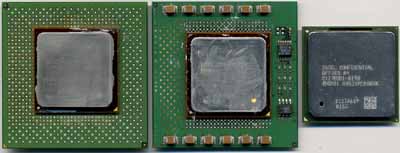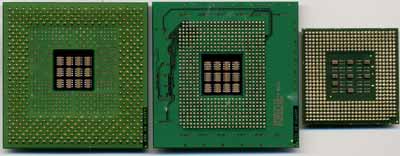Intel Pentium 4 2.0GHz: The clock strikes two
by Anand Lal Shimpi on August 27, 2001 4:27 AM EST- Posted in
- CPUs
How hard is it to hit 2.0?
The core architecture of the Pentium 4 processor has not changed since its introduction last November. Now running at 2.0GHz, the basic specifications remain the same. We’ll spare you the detailed description but if you are interested in the NetBurst Architecture behind the Pentium 4 then you've got a couple of options. Here's Intel's take on it but we strongly suggest that you have a look at this quick one page description of the micro-architecture from our Pentium 4 1.7GHz Review.
If you haven’t already found out, one of the major features of the Pentium 4’s architecture is its Hyper Pipelined Technology. This is nothing more than marketing spin on the fact that the Pentium 4 has a very long pipeline. A long pipeline itself doesn’t translate into performance as the name would imply, rather there are actually quite a few downsides to having a long pipeline. Branch mis-predict penalties are very high (although reduced by the use of a good branch prediction unit and a trace cache) and un-optimized code can perform quite poorly as the average IPC when dealing with a longer pipeline is considerably lower. The benefit of this is that because the processor is doing less per clock, it can run at higher clock speeds.
With our 1.8GHz Pentium 4 we were able to run at 2.0GHz without any additional cooling, indicating that Intel’s journey to the 2.0 mark wasn’t that difficult. The CPU uses a 20.0x multiplier to run at its 2.0GHz frequency; remember that the Pentium 4’s FSB is quad-pumped meaning that although data is transferred four times per clock, the true operating frequency of the bus is still 100MHz while offering data transfers equivalent to that of a 400MHz bus.
Although the Pentium 4 is fundamentally unchanged, Intel did introduce a new socket for the Pentium 4 2.0 launch. The original Pentium 4 used a 423-pin Pin Grid Array (PGA) socket interface; while the 1.9GHz and 2.0GHz Pentium 4s being announced today will be available in Socket-423 versions, they will also be introduced in a new form factor as well: Socket-478.
The main difference between Socket-478 and Socket-423 is that the new socket features a much more densely packed arrangement of pins known as a micro Pin Grid Array (µPGA) interface. This allows the CPU to be much smaller and the space occupied by the interface socket on the motherboard to decrease as well. The entire Pentium 4 line will be available in both Socket-423 and Socket-478 versions, although eventually all of the processors will be Socket-478.
We have heard from motherboard manufacturers that it should not be too difficult to make a Socket-478 to Socket-423 converter for owners of older Pentium 4 motherboards. Newer Socket-478 motherboards will still primarily be based on Intel’s 850 and 845 chipsets so there isn’t much of a reason to upgrade boards other than to gain CPU support for Socket-478 processors. Now do you see why we didn’t recommend going down the Pentium 4 path early on?
From left to right: Socket-423 Pentium 4, Socket-603 Xeon, Socket-478 Pentium 4
This isn’t the first time Intel has introduced a microPGA CPU interface. If you’ll remember to the Intel Xeon launch of this past May, the Intel Xeon processor features a 603-pin interface socket that is no longer than the Pentium 4’s old Socket-423. The main reason being that the pins are much more densely packed in a microPGA package.












0 Comments
View All Comments